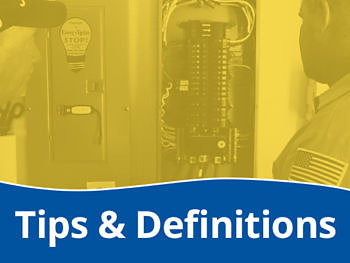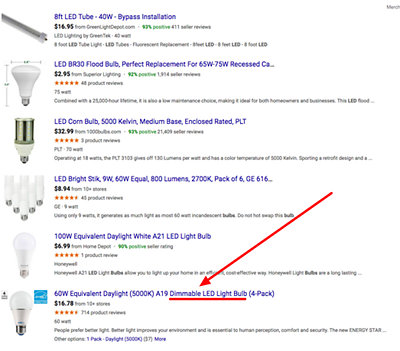Can You Put LED Lights On A Dimmer?
November 14, 2017

Switching out incandescent light bulbs for LED bulbs is a great way to cut down on your monthly energy bills. But if you use dimmers in your home, you’re likely wondering: Do LED lights work on a dimmer?
Well, the answer depends: Yes, LED lights work on a dimmer when:
- You have “dimmable” LED light bulbs
- You use an LED compatible dimmer
Not sure where to start when it comes to identifying the equipment you already have? Don’t worry. We’ll walk you through some easy-to-follow steps that will ensure you get the dimming effect you want with the energy-efficient bulbs you need.
Need a Sarasota electrician to install LED lights with a dimmer that’s compatible? Just contact us. We’re here to help.
Step 1: Make sure you have “dimmable” LED lights
Not all LED lights are designed with dimming capabilities. So, the first thing you’ll want to do is make sure that you invest in “dimmable” LED lights.
Check the box or product description first to make sure they’re “dimmable” (see below).

So, what happens if you use non-dimmable LEDs on a dimmer? Well, at best the bulb just won’t dim properly. At worst, though, you might damage the bulb.
You see, dimmable LEDs have special circuitry inside that allows them to respond to varying current levels or “pulsing” current waves to produce a dimming effect. But non-dimmable LEDs are only designed to be either fully powered ON or OFF, which means the circuitry inside won’t be able to handle low or pulsing current levels and will eventually become damaged.
Step 2: Find out if you have an LED compatible dimmer
The bad news? It’s impossible to tell whether your dimmer works with LED bulbs just by looking at it. You’d have to contact the installer or manufacturer to get an accurate answer.
But, if you already have a dimmer installed in your home that originally was using incandescent bulbs, you most likely have a “leading edge” dimmer that isn’t compatible with LED lights (unless your home was built in the last 5 years or was renovated recently).
You see, the 2 most common household dimmers include:
- Leading edge dimmers- these dimmers were designed to work with incandescent bulbs and most likely won’t work well with LED light bulbs. They’re the “traditional” and most common dimmer found in homes.
- Trailing edge dimmers- these are designed specifically to work with LED lights. These dimmers are newer and less common than leading edge dimmers.
The difference between these two dimmers all comes down to their wattage range. You see, incandescent bulbs are high-wattage (i.e. they use a lot of energy) and leading edge dimmers are designed to work with high-wattage loads. The downside is that LED bulbs have extremely low-wattage (they use up very little energy), which means leading edge dimmers can’t read or control their circuitry very well.
Trailing edge dimmers, on the other hand, have a much lower wattage range and can read and control LED bulbs easily and effectively.
Don’t have an LED compatible dimmer? Here’s what to do…
If you have a leading edge dimmer that doesn’t work with LED bulbs, you’ll want to contact a professional about installing a trailing edge dimmer.
The cost for installing a trailing edge dimmer usually ranges from $60 to $200 depending on the contractor you hire and ease of the installation.
While some homeowners are handy enough to install a new dimmer switch themselves, we suggest letting an electrician handle the job. This ensures that:
- You’re installing a dimmer switch that’s truly LED compatible
- The job is done correctly and safely
Need help from an electrician in Florida?
We can help. Just contact us and we’ll send out an electrician who can inspect your current dimmer setup, make professional suggestions and install the correct equipment. We serve Tampa Bay, Central Florida, and SW Florida and have locations in Sarasota, Tampa, Orlando, and Naples.
Check out all of the lighting equipment we can help you install.